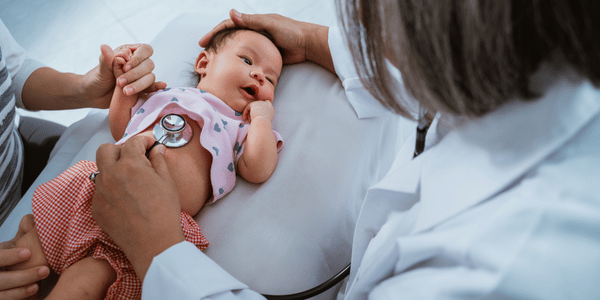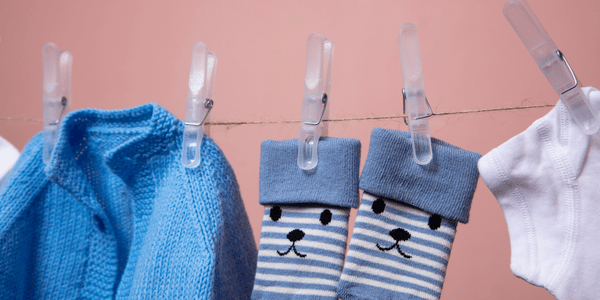As if you needed more to think about during this pregnancy, the list of early parenting decisions continues to grow. The baby is not even here yet and you are already making lasting decisions about their health! From the color of the paint in your nursery to finding the right pediatrician, things should be starting to feel a bit more real.
While each family may have their own schedule or approach to pregnancy, here is a list of some early pregnancy decisions that you may be considering as time passes and that baby bump continues to grow.
Choosing Your Pediatrician
There is no doubt that the process of finding a pediatrician can seem wildly overwhelming. With so many practices to choose from and a million reviews online to read, finding the perfect pediatrician may seem like a daunting task for most parents. While we cannot pick the pediatrician for you, here are some important things to consider when choosing the right pediatrician for your family.
Insurance Coverage
This may seem like an odd topic to cover first but it is important when sourcing your healthcare providers to consider your coverage and financial responsibility. A newborn patient may see their pediatrician anywhere from 6-10 times in the first year of life and receive several vaccinations. It is important to find a pediatrician that accepts your child’s insurance.
Trust
For most parents, finding a trusted pediatrician is the most important factor in decision-making. Overall, trust can be measured not only by your friends and family who may have their opinions or recommendations of who to see or avoid but also keep a close eye on those google reviews. While it is important to note that poor reviews are NOT a reflection of your pediatrician’s expertise or patient experience, reviews can be a clear insight into what other parents are experiencing at the office.

Expertise and Certification
Board-certified pediatricians are physicians who have graduated from college, completed 4 years of accredited medical school and have at least three certified years of residency in pediatrics. To receive board certification, pediatricians must also pass a rigorous examination given by the American Board of Pediatrics (ABP).
While receiving your initial board certification is a lengthy process, remaining certified request pediatricians to maintain ongoing education, demonstrate quality patient care and hold a valid medical license. These certifications are designed to ensure a top-level of quality care and commitment to patient outcomes.
Accessibility
For better or worse, your pediatrician is going to become a big part of your life as your child grows and develops. Finding a pediatrician who is accessible and easy to get ahold of is crucial for parents (especially in those off hours when an on-call doctor is available to calm those nerves).
Picking Out A Crib
While it may seem like a small detail, it is important to remember that the safety of your child is the most important factor when it comes to designing the nursery!
It may be easy to borrow a new crib from a friend, buy a used one online, or even purchase the newest and coolest design from your favorite European furniture designer. Safety! Safety! Safety! It is important to check the recommended safety standards.
From the width of the bars to the mattress itself, newborn sleep is one of the most important factors for child safety in a parent’s consideration.
Circumcision
Boy on the way? No problem, circumcision sure has drawn up plenty of discussion in the past. Circumcision is the surgical removal of the foreskin covering the penis. With countless scientific studies illustrating the benefits of circumcision, as well as the religious or cultural reasons, it is an extremely common procedure and nothing to be afraid of or shy to talk about.
Registering For Baby Clothes
BUY BIG! Here is our quick list of recommendations to get every newborn started.
- 3-4 sleepwear sets
- 6-8 T-Shirts
- 3 newborn sleep sacks
- 2 sweaters
- 2 hats or caps
- 4 pairs of socks or booties
- 4 – 6 receiving or swaddle blankets
- 1 set of baby washcloths and towels
- 3-4 dozen newborn-size diapers
- 3-5 onesies!

While we are sure that you child’s wardrobe will quickly expand, this list is a good start and way to ensure you are well prepared for your child’s arrival.
Breastfeeding or Bottlefeeding
Ahh! This is a topic we will definitely expand on in a later blog post but for now, here is the breakdown. From cost to convenience, milk supply, and overall health benefits, the toss-up between breastfeeding and bottle-feeding is a tale as old as time.
First and foremost, there is NOTHING wrong with either decision. For many moms or family dynamics, breastfeeding may not be an option and that is 100% fine! The American Academy of Pediatrics advocates for breastfeeding as the optimal form of infant feeding. While not identical, both breastfeeding and formula provide appropriate nutrition to the child and are safe (with their own advantages, disadvantages, and risks).
Breastfeeding may seem a bit obvious for the cost and convenience, however, there are some real medical benefits as well! Breast Milk provides your baby with natural antibodies that help to aid in the resistance of some infections (including ear, respiratory and intestinal infections). Breastfed babies are also less likely to suffer from allergies.
Formula on the other hand can often be a bit more satisfying as it is often dense in calories. With countless formula brands available, it is a process of trial and error for most parents in choosing the right product for their child.
The list of parenting decisions will never end, so get used to them! It is important to get ahead of these decisions, do your research and establish an open dialogue with your pediatrician who can answer any questions you may have.












